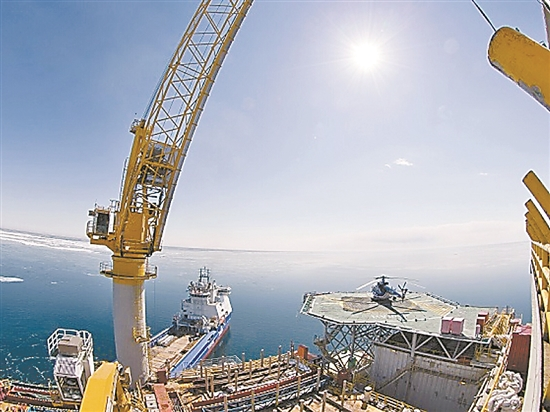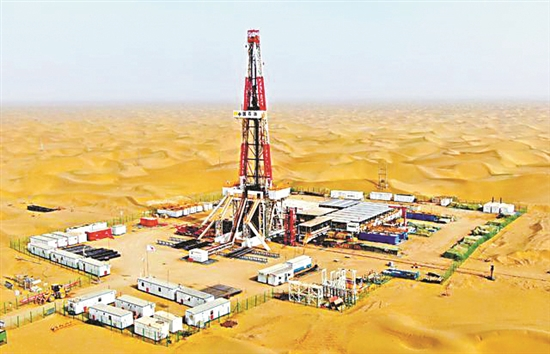Challenge 1: Complex Pressure Systems in Ultra-Deep Wells Complicate Wellbore Structure Design
Ultra-deep wells penetrate numerous geological formations, encountering highly complex and interwoven pore pressure regimes. High-pressure and low-pressure zones alternate, leading to frequent and intertwined complications such as formation collapse, stuck pipe, lost circulation, and kicks. There is a scarcity of drilling data for ultra-deep formations, and the available seismic and logging data for pore pressure prediction are limited and of poor quality. The lack of reliable reference data, coupled with the limitations of relying solely on real-time pressure monitoring while drilling, results in significant difficulties and low accuracy in predicting system pressures. This leads to substantial errors in formation evaluation, inappropriate design of casing setting depths and drilling fluid densities, and severe wellbore instability issues. Current technologies cannot accurately predict key parameters like formation pressure and rock mechanical properties, creating high uncertainty and making downhole risk management extremely challenging. Based on practical exploration and development needs, where further deepening the well might be necessary, wellbore structure design must incorporate one or two contingency casing sections to effectively isolate potential risk zones, substantially increasing associated costs.
Challenge 2: Excessive Pipe String Weight in Ultra-Deep Wells Hinders Safe Casing Running Operations
Ultra-deep drilling may encounter formations such as creeping mudstone and high-pressure salt-gypsum layers, posing risks of casing deformation, collapse, and rupture. These risks are often mitigated by increasing the wall thickness of the casing strings. Under conditions of extremely long cementing sections, the issues of excessive length and weight of the pipe strings become pronounced. Specifically, the weight of the casing string may exceed the safe loading limit of even a 12,000-meter rig (900 tons, equivalent to the combined weight of 150 to 180 adult African elephants). The hoisting capacity of existing rigs is insufficient to suspend such heavy casing strings normally, let alone handle tripping operations during complications or meet the required tensile safety margins for safe running.
15,240 meters: In October 2022, ADNOC set a new world record for the deepest well with its UZ-688 horizontal well in the Upper Zakum field, reaching a total depth (measured depth) of 15,240 meters.
Challenge 3: Hard and Complex Formations in Ultra-Deep Wells Impede Efficient Rock Breaking and Overall Drilling Acceleration
Formations in ultra-deep wells are complex, highly abrasive, and have poor drillability. Existing methods for drillability evaluation are inadequate and lack predictive accuracy, particularly in new exploration areas, severely hindering the scientific design and selection of drill bits. The current range of drill bits and rate-of-penetration (ROP) enhancement tools is limited, with constraints on formation adaptability and reliability. Their effectiveness is poor, and service life is short in challenging formations under high temperature and high pressure (HTHP) conditions. There is an urgent need to explore new technologies for efficient rock breaking in deep and ultra-deep wells. The transmission of hydraulic and mechanical energy is challenging over ultra-long sections, with significant frictional pressure losses along the drill string, resulting in insufficient power at the bit and making rock breaking difficult.
Challenge 4: Maintaining Drilling Fluid Rheology and Wellbore Stability under Ultra-Deep HTHP Conditions
Ultra-deep drilling faces downhole temperatures exceeding 200°C, requiring drilling fluids to possess high-temperature resistance, high density, salt tolerance, and long-term stability. High temperatures can cause material failure, high pressure makes rheological control difficult, high salt content aggravates system instability, and prolonged operation risks sagging of weighting materials. The combination of these four functional demands presents immense, nearly insurmountable technical challenges. Furthermore, existing technologies cannot effectively address issues such as cooling-induced fracturing when ultra-hot formations encounter relatively cooler drilling fluids, or wellbore instability caused by changes in water activity under extreme temperatures.
Challenge 5: Inadequate Performance of Cement Slurries and Associated Technologies under Ultra-Deep HTHP and Complex Pressure Conditions
Conditions involving ultra-depth, high temperature, long cementing sections, and complex pressure systems impose extremely high demands on cement slurry properties, including suspension stability, rheology, gas migration control, and set cement strength stability. Critical additives such as fluid loss controllers and retarders may decompose or react abnormally under ultra-high temperatures, leading to functional failure and potentially severe downhole incidents. The ultra-high temperature environment also places stringent requirements on the compatibility between the additive system and materials preventing cement strength retrogression.
9,396 meters: In 2023, Tarim Oilfield’s Guole 3C well set a record for the deepest horizontal well in Asia (measured depth).
Challenge 6: HTHP Conditions Exceeding Tolerance Limits of Critical Equipment and Tools
Ultra-deep wells face extreme downhole conditions with temperatures exceeding 200°C and pressures over 175 MPa (equivalent to the water pressure at 17,500 meters depth, far exceeding that at the bottom of the Mariana Trench). The temperature limit for most existing downhole equipment is around 175°C. Under harsh operating conditions featuring ultra-HTHP, acidic environments, and strong vibrations, tools, instruments, and equipment are prone to failures. These include swelling and aging of elastomer rubbers in mud motor stators and seals in torque impact tools, malfunction or battery failure of MWD/LWD electronic components, and insufficient pressure resistance of completion tools, rendering critical equipment and tools inoperable.
Challenge 7: New Demands on Logging Technology from Ultra-Deep, HTHP, and Small-Diameter Boreholes
The depth of ultra-deep wells is approaching the maximum operational limit of current logging winches, posing challenges to the power systems involving high-power trucks, high-tension cables, large-capacity drums, and high-strength lifting equipment. The downhole HTHP environment is nearing the upper limits of conventional ultra-HTHP series instruments. Internationally, there are no mature tools for specialized services like electrical imaging and nuclear magnetic resonance in such conditions. The risk of tool failure due to temperature and pressure limits is high, leading to potential unsuccessful or poor-quality logs. Signal attenuation over 13,000-meter ultra-long cables significantly impacts telemetry systems for wireline logging, making stable communication difficult to ensure.
Challenge 8: Ensuring Safe and Efficient Well Testing under Extreme HTHP Conditions
Calculations based on a gas-filled wellbore indicate that the maximum anticipated shut-in wellhead pressure for ultra-deep wells can exceed 100 MPa, potentially with hydrogen sulfide present. The widely used well testing and completion tools are typically rated for 70 MPa and 175°C. The production testing strings for ultra-deep wells have relatively smaller sizes yet require high strength. Employing special materials and non-standard pipe designs complicates system optimization and makes stress analysis and verification highly challenging. Current high-density well testing fluids and downhole test tools struggle to meet the requirements of ultra-high temperature operations, making the selection of optimal fluid systems and tools difficult.
Post time: Nov-05-2025










 Room 703 Building B, Greenland center, Hi-tech development zone Xi’an, China
Room 703 Building B, Greenland center, Hi-tech development zone Xi’an, China
 86-13609153141
86-13609153141


